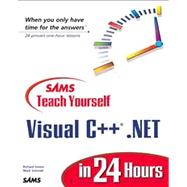
Richard J. Simon has been a pioneer in new technology since 1985 when he started a consulting company to develop PC solutions for businesses. As an early Windows developer, he developed using client/server technologies that are now common place in the industry. Richard has been on the leading edge of Internet technologies and n-tier development using early alpha versions of Microsoft technology and has been actively using .NET technologies since early 2000. Richard if a former CTO of over eight years for a software development company that developed and marketed applications to fortune 1000 companies. He currently is the Co-Founder and CEO of MillenniSoft, Inc. and an established author of several Windows programming books and has tech edited several other books on Windows development and technologies.
Mark Schmidt has been a software engineer at Hewlett-Packard for the past 3 years. Mark began his career writing magazine articles for Fawcette Technical Publications. His articles have appeared in Visual C++ Developer's Journal, Visual Basic Programmer's Journal, and Visual Studio Magazine. In January 2001, Mark spoke at the VSLive! Developer's Conference in San Francisco. In that talk, Mark outlined his solution for advanced customizable user interfaces based on the Active Template Library (ATL). Mark is on a constant path to learn the latest and greatest technologies, and his recent work within the .NET world has kept him busier than ever. Feel free to contact him at mark_schmidt@vcd.hp.com
(NOTE: Each chapter concludes with a Summary, Q&A, and Workshop.)
Introduction.
I. GETTING STARTED WITH VISUAL C++ .NET.
II. UNDERSTANDING .NET.
III. IMPLEMENTING A USER INTERFACE.
IV. SERVER DEVELOPMENT.
V. LANGUAGE FEATURES.
VI. ADVANCED PROGRAMMING.
The New copy of this book will include any supplemental materials advertised. Please check the title of the book to determine if it should include any access cards, study guides, lab manuals, CDs, etc.
The Used, Rental and eBook copies of this book are not guaranteed to include any supplemental materials. Typically, only the book itself is included. This is true even if the title states it includes any access cards, study guides, lab manuals, CDs, etc.